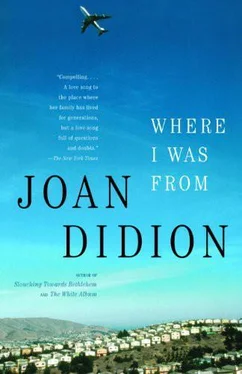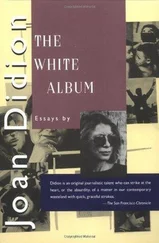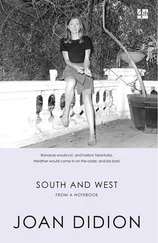“They’re history,” an aircraft industry executive said that spring to The Washington Post. “I see a company going out of business, barring some miracle,” Don E. Newquist, chairman of the International Trade Commission, said at a hearing on commercial aerospace competitiveness. Each was talking about Douglas, and by extension about the plant on the Lakewood city line, the plant with the flag and the forward-slanted logo and the MD-IIS parked like cars and the motel with the marquee that still read “Welcome Douglas Happy Hour 4–7.” “It’s like a lifetime thing,” one Lakewood High graduate said on Jane Whitney , trying to explain the Spur Posse and what held its members together. “We’re all going to be friends for life, you know.”
It was 1997 when Douglas was finally melted into Boeing, and the forward-slanted letters reading MCDONNELL DOUGLAS vanished from what was now the Boeing plant on the Lakewood city line.
It was 1999 when Boeing shut down Douglas’s MD-90 program.
It was 2000 when Boeing shut down Douglas’s MD-80 program, 2001 when Boeing shut down Douglas’s MD-II program.
It was 2000 when Boeing began talking about its plan to convert two hundred and thirty acres of what had been the Douglas plant into non-aircraft use, in fact a business park, “PacifiCenter,” with its own condominium housing and the dream of attracting, with what inducements became increasingly unclear as the economy waned, such firms as Intel and Sun Microsystems.
It was 2002 when Boeing obtained an order from the Pentagon for sixty additional C-17S, another temporary stay of execution for what had been the Douglas program, which had been scheduled for closure in 2004. “It’s a great day,” the manager on the program told employees on the day he announced the order. “This is going to keep you employed through 2008, so rest tonight and start on sixty more tomorrow.”
It was also 2002 when the first stage of a multi-billion-dollar public works project called the “Alameda Corridor” was completed, a $2.4 billion twenty-mile express railway meant to speed freight containers from the ports of Long Beach and Los Angeles to inland distribution points. This “Alameda Corridor” had been for some years a kind of model civic endeavor, one of those political mechanisms designed to reward old friends and make new ones. During the period when the Alameda Corridor was still only an idea, but an idea moving inexorably toward a start date, its supporters frequently framed it as the way to bring a “new economy” to the twenty-six “Gateway Cities” involved, all of which had been dependent on aerospace and one of which was Lakewood. This “new economy” was to be built on “international trade,” an entirely theoretical replacement for the gold-standard money tree, the federal government, that had created these communities. Many seminars on “global logistics” were held. Many warehouses were built. The first stage of the Alameda Corridor was near completion before people started wondering what exactly these warehouses were to bring them; started wondering, for example, whether eight-dollars-an-hour forklift operators, hired in the interests of a “flexible” work force only on those days when the warehouse was receiving or dispatching freight, could ever become the “good citizens” of whom Mark Taper had spoken in 1969, the “enthusiastic owners of property,” the “owners of a piece of their country — a stake in the land.” California likes to befooled , as Cedarquist, the owner in The Octopus of the failed San Francisco iron works, told Presley at the Bohemian Club.
In 1970 I was working for Life , and went up to eastern Oregon to do a piece on the government’s storage of VX and GB nerve gas on twenty thousand acres near Hermiston, a farm town in Umatilla County, population then 5,300. It seemed that many citizens wanted the nerve gas, or, in the preferred term, “the defense material,” the storage of which provided 717 civilian jobs and brought money into town. It seemed that other citizens, some of whom lived not in Hermiston but across the mountains in Portland and Salem, making them members of what was referred to in Hermiston as “the academic community and Other Mothers for Peace or whatever,” saw the presence in Oregon of VX and GB as a hazard. The story was routine enough, and I had pretty much wrapped it up (seen the mayor, seen the city manager, seen the anti-gas district attorney in Pendleton, seen the colonel in charge of the depot and seen the rabbits they left in the bunkers to test for leaks) before I realized that the situation had for me an actual resonance: since well before Elizabeth Scott was born, members of my family had been moving through places in the same spirit of careless self-interest and optimism that now seemed to be powering this argument in Hermiston. Such was the power of the story on which I had grown up that this thought came to me as a kind of revelation: the settlement of the west, however inevitable, had not uniformly tended to the greater good, nor had it on every level benefitted even those who reaped its most obvious rewards.
One afternoon in September of 2002 I drove the length of the Alameda Corridor, north from the port through what had been the industrial heart of Southern California: Carson, Compton, Watts. Lynwood, South Gate. Huntington Park. Vernon. It was a few weeks before that fall’s dockworkers’ strike shut down Pacific trade, and I saw that afternoon no trains, no containers, only this new rail line meant to carry the freight and these new warehouses meant to house the freight, many of them bearing for-lease signs. On the first hill north of Signal Hill there was what appeared to be a new subdivision, with a sign, “Vista Industria.” Past the sign that read Vista Industria there were only more warehouses, miles of warehouses, miles of empty intersections, one Gateway City after another, each indistinguishable from the last. Only when the Arco Towers began emerging from the distant haze over downtown Los Angeles did I notice a sign on a warehouse that seemed to suggest actual current usage. 165,000 Square Feet of T-Shirt Madness , this sign read.
S ave the Aero — See “Tadpole.” This was the sign on the Aero Theatre on Montana Avenue in Santa Monica in September of 2002. The Aero Theatre was built in 1939 by Donald Douglas, as recreation for his workers when Douglas Aircraft was Santa Monicas biggest employer. During the ten years when I was living not far from the Aero, 1978 to 1988, I never saw anyone actually enter or leave the theatre. Douglas built Santa Monica and then left it, and the streets running south of what had been the first Douglas plant were now lined with body shops, mini-marts, Pentecostal churches and walk-in dentists. Still, Santa Monica had its ocean, its beaches, its climate, its sun and its fog and its climbing roses. The Gateway Cities will have only their warehouses.
“What had it all been about: all the manqué promises, the failures of love and faith and honor; Martha buried out there by the levee in a $250 dress from Magnin’s with river silt in the seams; Sarah in Bryn Mawr, Pennsylvania; her father, who had not much cared, the easy loser (He never could have been , her mother had said and still loved him); her mother sitting alone this afternoon in the big house upriver writing out invitations for the Admission Day Fiesta and watching Dick Clark’s American Bandstand because the Dodgers were rained out; Everett down there on the dock with his father’s.38. She, her mother, Everett, Martha, the whole family gallery: they carried the same blood, come down through twelve generations of circuit riders, county sheriffs, Indian fighters, country lawyers, Bible readers, one obscure United States senator from a frontier state a long time ago; two hundred years of clearings in Virginia and Kentucky and Tennessee and then the break, the void into which they gave their rosewood chests, their silver brushes; the cutting clean which was to have redeemed them all. They had been a particular kind of people, their particular virtues called up by a particular situation, their particular flaws waiting there through all those years, unperceived, unsuspected, glimpsed only cloudily by one or two in each generation, by a wife whose bewildered eyes wanted to look not upon Eldorado but upon her mothers dogwood, by a blue-eyed boy who was at sixteen the best shot in the county and who when there was nothing left to shoot rode out one day and shot his brother, an accident. It had been above all a history of accidents: of moving on and of accidents. What is it you want, she had asked Everett tonight. It was a question she might have asked them all.”
Читать дальше
Конец ознакомительного отрывка
Купить книгу












